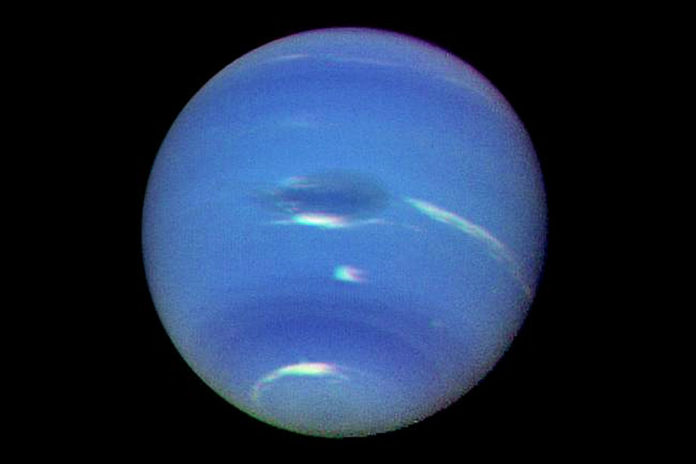Neptune is the eighth planet from the sun. It lies in the outer half of the solar system and is the fourth largest planet. The planet obtains its name from the Roman god of the sea. The outer planets of Jupiter, Saturn, Neptune, and Uranus are all giant planets. Uranus and Neptune are ice giantst. Neptune has 14 satellites and a faint planetary ring system.
Features of Neptune
Atmosphere: The atmosphere of this ice giant is mostly hydrogen (80%), helium (19%), and methane (1%) gas. However, the interior of the planet is made up of frozen water, ammonia, and methane. As a result, the planet is considered an ice giant.
The atmosphere is more active than the atmosphere on Uranus. Neptune has a Great Dark Spot. This spot is an intense storm in the planet’s atmosphere. It is similar to Jupiter’s Great Red Spot. Neptune has the fastest winds in the solar system. At times, wind speeds reach 2,000 kilometers per hour.
Planetary Rings: Like Saturn, the planet has planetary rings. Scientists believe that these rings were formed by the destruction of at least one of her moons. The planet has 14 satellites, with Triton being the largest moon.
Color: This ice giant is the eighth planet from the sun. This makes it the most distant of the main planets. The eighth planet has a bluish color. This color is due red light being absorbed by methane in the atmosphere.
Facts About Neptune
| PROPERTIES | MEASUREMENTS |
|---|---|
| Distance from the sun | 4,537 million kilometers (aphelion), 4,459 million kilometers (perihelion). |
| Size | radius of 24.6 thousand kilometers. |
| Mass | 17.1 times that of the earth. |
| Gravity | 1.14 times that of the earth. |
| Satellites | 14 satellites. |
| Rotation | 18 hours (length of a day). |
| Revolution | 60,190 days (time to orbit the sun). |
| Surface Temperatures | 72 °K. |
Reflections
Vocabulary
- atmosphere
- planetary rings
- wind
Notes
- Neptune is an ice giant and the eighth planet from the sun.
- The planet has a faint planetary ring made of ice particles.
- Like Jupiter, a giant Dark Spot is visible on the planet’s surface – a storm with high speed winds.

